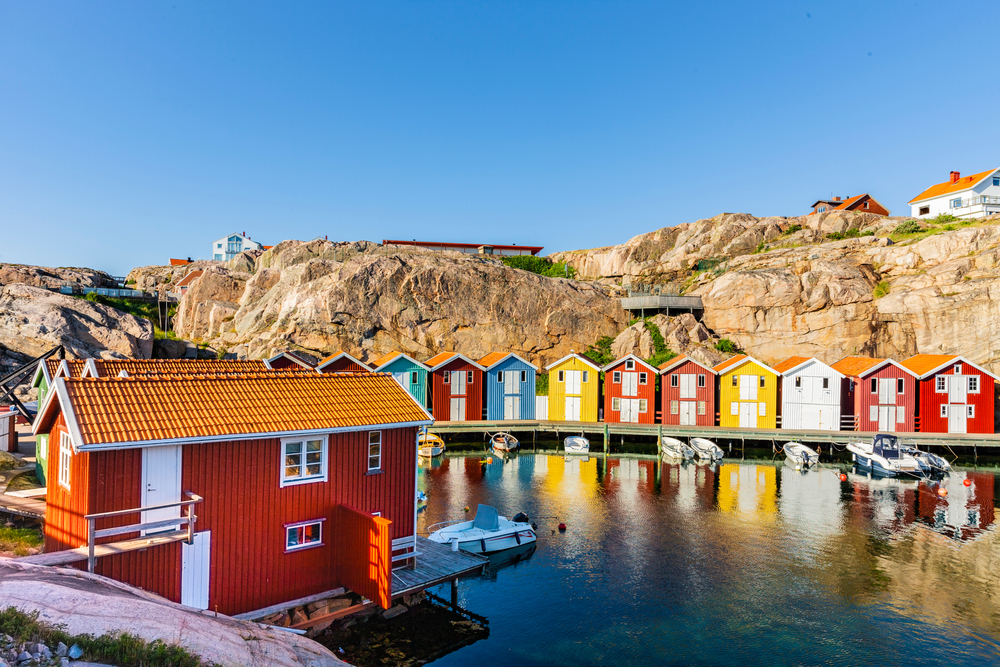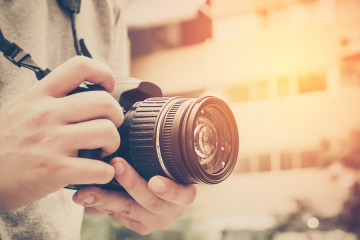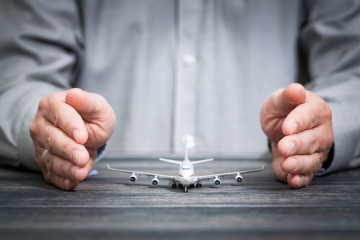Hip cities, frozen lakes and the promise of the northern lights – the land of the midnight makes sun for a once-in-a-time travel destination
The land of the midnight sun and the aurora borealis, of achingly hip cities and true wilderness grazed by reindeer, Sweden really is as stunning, spacious and stylish as you imagine it to be.
There’s plenty of space to breathe – at almost 1,000 miles long, blanketed in forest and home to 25 national parks and 267,000 islands, Sweden’s wild places are where to join the locals and hike forest trails and celebrate the solstice in summer, pick berries and go island-hopping in autumn, and ski across frozen lakes in winter (or even be really brave and take a dip in an ice hole, followed by a hot sauna).
Sweden’s cities, by contrast, offer their own brand of Scandi cool – they’re style-conscious, sustainable and home to modern eco-hotels, medieval quarters, word-famous design brands and the last word in Nordic cuisine.
Current travel restrictions and entry requirements
There are no current Covid-19-related requirements regarding testing or self-isolation when entering Sweden, and masks are not required in public as a rule. The Public Health Agency of Sweden recommends that anyone who develops symptoms of Covid-19 while in the country stay at home and avoid close contact with others.
Best time to go
Sweden’s wild spaces and vibrant cities are rewarding to visit in any season, from joining in the foodie festivities around the summer solstice to gazing up at the mesmerising northern lights in the winter. In May and September temperatures are similar to Britain, and long hours of daylight culminate in midsummer’s vibrant outdoor parties. Summer and autumn are the perfect seasons for hiking, city exploring and island-hopping. December to March is the best time to spot the Northern Lights (but avoid Lapland at Christmas, when it’s crowded and prices can skyrocket) or to take to the slopes at one of Sweden’s 100 ski resorts (except for the last week of February, Swedish half term).
Top regions and cities
Stockholm
Photogenic, inviting, exciting – Sweden’s capital feels like a collection of different cities rolled in one, perhaps because it was built across 14 separate islands, each with their own personality, on the shores of the Baltic Sea. Expect all the ingredients of the Scandinavian Good Life wherever you choose to explore in the city – art galleries and design museums rub shoulders with Scandi boutiques, sustainable dining joints and spirited nightlife.
Gamla Stan (the Old Town) is the achingly pretty but tourist-packed old quarter. Vasastan has a tempting list of indie restaurants to pick from, and Djurgården is the city’s park-filled green lung.
The hip head to Södermalm, regularly voted one of the coolest neighbourhoods in the world and packed with cafes, hangouts and the sort of boutiques and brands that have made Sweden world-famous as a design hub. Stroll along the waterfront here to visit the Swedish museum of photography, Fotografiska.
When you need an escape from the capital’s crowds, head to one of the 30,000 islands of the Stockholm archipelago to explore peaceful island villages and go wild swimming off sandy shores.
Gothenburg and Gothenburg Archipelago
Meet Sweden’s sustainability-minded and second-largest city, perched on the west coast and home, so the Swedes say, to the country’s friendliest people. In 2021, Gothenburg was named the world’s most sustainable city for the fourth time in a row, and it’s easy to plan a laid-back, car-free break here, exploring by bike, tram or even electric boat.
Gothenburg is a smorgasbord of canals, bridges, attractive parks, a huge botanical garden and modern public saunas, and Stockholm’s cool little sister is also a hub for thrifted and vintage clothes, surely the most fun way to shop sustainably.
Like Stockholm, Gothenburg has its own archipelago of 20 islands to explore – the car-free southern archipelago and the further-flung but rewardingly beautiful northern islands. Head to Hönö to go on a seal safari, Asperö for sea swimming and Grötö for proper peace and quiet.
Lapland
Sweden’s northern territory conjures up images of skiing across frozen tundra under the aurora in winter, or of berry picking and reindeer spotting in the light of the midnight sun in the summer – and Lapland is every bit as spectacular as you’d imagine. This is a true wilderness, home to elk and bears, wide rivers and swathes of untouched forest, all criss-crossed with hiking trails and dotted with traditional Sámi (the indigenous people of northern Sweden, Norway, Finland and Russia) settlements.
Kiruna, Sweden’s northernmost town (and home to Sweden’s world-famous Icehotel in nearby Jukkasjärvi) makes an excellent base for exploring the region’s national parks as well as for heading out on husky sledding treks, reindeer safaris and snowmobile adventures.
Best under-the-radar destinations
Jokkmokk Market
The most spectacular market you’ve never heard of has been around for 400 years. In the first week of February, around 30,000 Sámi people and other visitors flock to the snow-bound streets of Jokkmokk in Swedish Lapland for the winter Sámi market to buy and sell traditional wares, socialise after a long winter, listen to ‘Joik’ songs – one of the oldest folk music forms in Europe – and watch reindeer race across the frozen surface of Talvatissjön lake.
Södermanland (Sörmland)
A short journey from buzzy Stockholm, this lovely, laid-back province is home to tiny islands, placid lakes and postcard-pretty towns, perfect for escaping to after a few days exploring Sweden’s capital. Sörmland has long been a favourite escape with Swedes – there are over 400 castles and manor houses dotted through the region that were once the country escapes of the gentry. The canal and café-packed town of Trosa makes the best base, and hikers can tackle a chunk of the Sörmlandsleden, one of the longest walking trails in Scandinavia, from here.
Koster Islands
One of Sweden’s best-kept secrets, this 450-square km national park is an archipelago of green islands, sandy beaches and wild moorland. The two car-free main islands, south Koster and north Koster, both have permanent populations and a smattering of galleries, hotels, campsites and craft shops, and are linked by chain ferry. The area around the preserve is one of the most biodiverse in Sweden, home to 12,000 different species – bring a snorkel to explore the crystal-clear waters of Kosterhavet, Sweden’s only marine national park. A haven for kayakers, wild swimmers, hikers and lovers of the simple life.
Best things to do
Pop out for fika
One of Sweden’s most cherished customs is the ritual of fika – coffee and cake. So popular that it’s both a noun and a verb, fika is more than just an afternoon treat – it’s a daily social occasion combining Sweden’s café culture with its love of traditional cinnamon buns (kanelbulle). Deciding which bakery serves the very best bun is half the fun (Bageri Petrus in Stockholm has repeatedly been named the best in the Swedish capital, while Café Husaren in Gothenburg does a great vegan version).
Trek the Kungsleden
The adventurous should don hiking boots (and pack plentiful bug spray) to tackle a section of the Kungsleden, a 440km trail stretching between Abisko and Hemavan in Swedish Lapland. This is true wilderness, passing through four national parks of birch forest and tundra grazed by reindeer as well as under the shadow of the Kebnekaise (Sweden’s tallest mountain, at 2,099 metres). You can rough it by wild camping along the trail, or plan your trek around the 16 attractive STF huts (some complete with wood-fired saunas) that make simple but comfy stops along the way.
Visit the Vasa
The imposing Vasa is a matter of national pride in Sweden. An intricately carved warship built in the 17th century, she unceremoniously sank on her maiden voyage, but was salvaged from the deep three centuries later and has been meticulously restored to her original, artful glory. Visit her at the Vasa Museum in Stockholm.
Celebrate Midsummer
Midsommar (celebrated on the weekend that falls between 20 and 26 June) is a joyful highlight of the Swede’s summer calendar, when the solstice is toasted with alfresco parties countrywide. Midsummer is all about feasting – traditional fare includes pickled herring and strawberries, all washed down with potent Aquavit spirit. If you’re looking for the full midsummer experience head to Dalarna, where locals dress up in traditional folk costumes, parade with floral garlands and dance around a maypole on the shores of Lake Siljan. Gothenburg and the Bohuslan coast are other solstice hotspots.
Gaze up at the Northern Lights
The Aurora Borealis comes alive in dancing streaks of green, pink and purple in the night skies above the north of Sweden in September each year. The best time to see the show is January, when low temperatures make for the most spectacular displays, but the lights are often spotted well into March in Lapland. The Sámi – the indigenous people of Sweden – believed the lights were the souls of the dead, while the Vikings thought that the Northern Lights were the Valkyries taking fallen soldiers to meet Odin, god of war.
Go skiing
Grab your goggles – Sweden boasts 100 ski resorts, ranging from Åre in Jämtland-Härjedalen, which offers black slopes and off-piste skiing and Sälen, Dalarna, northern Europe’s largest ski resort, to small mom-and-pop resorts with just a few runs each. Some resorts are close enough to Stockholm and Gothenburg that you can pop into them for a snowsports day mid-city break.
Getting around
Sweden is a big old country, but it’s graced by a wide-ranging and efficient public transport system. Besides flying from the south of Sweden up to Lapland (1.30hrs), the reliable train service (https://www.sj.se/en/) is usually the best option for short and long-distance travel. You can also chug all the way from Stockholm up to Kiruna, well within the Arctic Circle, on the Arctic Sleeper overnight train.
Sweden’s beautiful archipelagos are well-served by car and foot ferries that often link up with bus and train timetables on the mainland, so island hopping is simple. Bikes are widely available to rent in Sweden, ideal for exploring city streets and car-free islands alike.
How to get there
Most sustainable
The new EuroNight train service (launched in September 2022) is powered by renewable energy and takes passengers from Stockholm to Hamburg in Germany, where it connects with existing Eurostar services, cutting train travel time between Stockholm and London to around one day.
Quickest
Fly from London to Stockholm in 2.30 hours. Arlanda Airport, just north of Stockholm, is the country’s biggest hub and the entry point for most international travellers, while Landvetter Airport is the gateway to Gothenburg. You can fly direct to both Stockholm and Gothenburg with SAS, British Airways, Ryanair and easyJet. Skåne and Malmö are easily accessible via Copenhagen in Denmark, and during the winter, easyJet flies direct from London Gatwick to Åre Östersund airport in Jämtland, on the Lappish border.
Money-saving tip
Sweden has lots of things to shout about – but bargain prices are not usually one of them. To save on expensive accommodation, stay at simple but comfy hostels and cabins run by the Swedish Tourist Association (STF, https://www.swedishtouristassociation.com/) – there are 350 hostels, hotels, cabins and mountains stations dotted across the country, with affordable options available everywhere from big cities to rural woodlands or even right under the Northern Lights.
FAQs
What’s the weather like in Sweden?
Varied! Winter and summer differences can be extreme, although in general Sweden has a temperate climate. Summers in the south are pleasingly balmy, while north of the Arctic circle you should expect severe cold (temperatures sometimes reach -30C) and a blanket of snow in winter.
What time zone is Sweden in?
Sweden is in Central European Time (GMT+1).
What currency do I need?
The currency of Sweden is the Swedish Kroner, and card is king – you’ll rarely need to carry cash, even in remote spots.
What language is spoken?
Swedish (Svenska) is the national language of Sweden, with five official minority languages also spoken: Sami, Finnish, Meankieli (Tornedalen Finnish), Yiddish and Romani Chib. Many Swedes speak fantastic English, and travel signs and announcements are also frequently in English.




2 Comments
[url=http://vermox.charity/]how much is vermox in south africa[/url]
[url=http://metformini.com/]prices of metformin[/url]